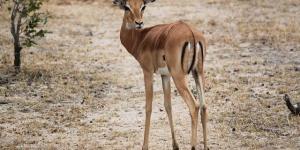Hairless Animals - Examples of Animals Without Hair

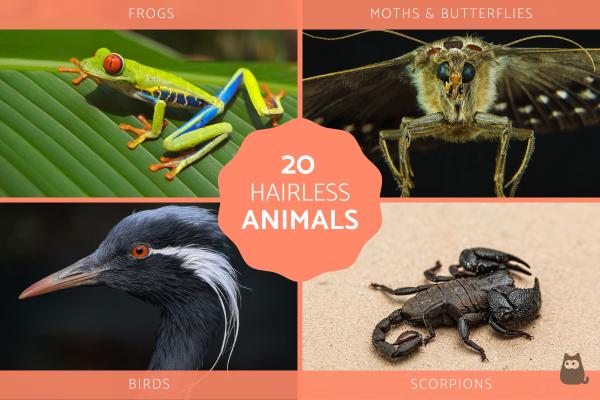
Hair is a keratinized structure which can be of varying qualities. It is the same basic material which makes nails, yet it can also be incredibly soft and fluffy. The only animals that truly have hair are mammals. It is generally used for thermoregulation, both to keep the animal warm and to cool them when it is too hot. It is also used for protection and is a part of the animal's reproductive behavior since it is often used to attract a mate. Animals without hair do not have any of these benefits hair can provide, but this does not mean they don't have their own adaptations.
At AnimalWised, we explore different types of hairless animals. We look at examples of animals without hair or feathers, providing information on their characteristics and photos so you can see what they look like.
- Moths and butterflies
- Frogs
- Octopuses
- Scorpions
- Lizards
- Fish
- Crabs
- Turtles
- Birds
- Spiders
- Other animals that do not have hair
Moths and butterflies
Moths and butterflies are insects that are grouped in the order Lepidoptera. You may be surprised these insects are considered hairless animals as many of them have a fluffy appearance on their bodies. Some moths even have large antennae which appear very feathery. These hair-like structures are actually setae, a form of bristly appendage which are more alike to reptilian scales than mammalian hairs.
Sometimes these setae appear prominently on both the adult form (moth or butterfly) and their larval form (caterpillars). Sometimes these fuzzy larvae of lepidopterans are poisonous. Touching or ingesting them cause considerable irritation. In the case of larvae from the giant silkworm moth (Lonomia obliqua), the toxins can even be fatal.
Learn more about lepidopterans with our guide to the differences between moths and butterflies.

Frogs
Although they may seem different, there are many similarities between frogs and toads. All are amphibious vertebrates which can have smooth or warty skin. This skin is hairless and often secretes a slimy substance made of mucus. This mucus can be poisonous, sometimes even fatal in the right circumstances.
Devoid of hair, scales or feathers, the skin of frogs and toads is usually moist. This moisture can be used to thermoregulate, but an interesting fact is that frogs also breathe through their skin. They use it to exchange moisture and oxygen to help respiration in very humid environments. They are often of interesting colors which can be used to camouflage in various environments, sometimes drab, sometimes vibrantly colorful.
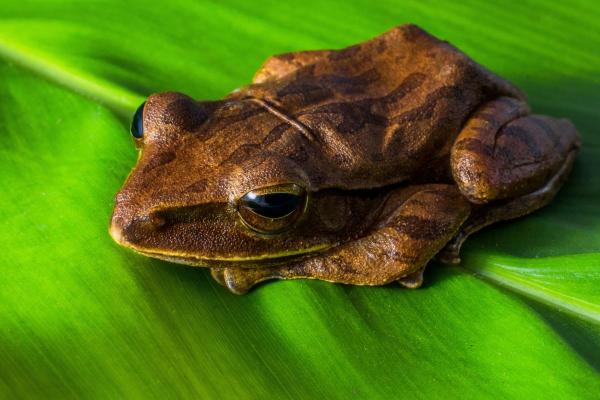
Octopuses
Octopuses are mollusks that correspond to the class of cephalopods. They are all types of marine animals and are animals with completely hairless skin. Their external organ is made up of various types of cells and tissues which can even change color in some cases. Their bodies are soft, allowing them to lengthen and contract. It is a useful skill in both evading predators and capturing prey. As with some other hairless animals on our list, some octopuses can be incredibly poisonous.
Learn more with our article which shares 20 amazing octopus facts.

Scorpions
Scorpions are arthropod animals of the arachnid class. Not only are these animals without hair, they don't even have skin. Instead, they have a rather distinct exoskeleton. This is in the form of a cuticle made of hard chitin. Although scorpions are hairless, they are significantly resistant to both extreme temperature variations and a lack of humidity. This is very useful in the often hot and dry climates they inhabit.
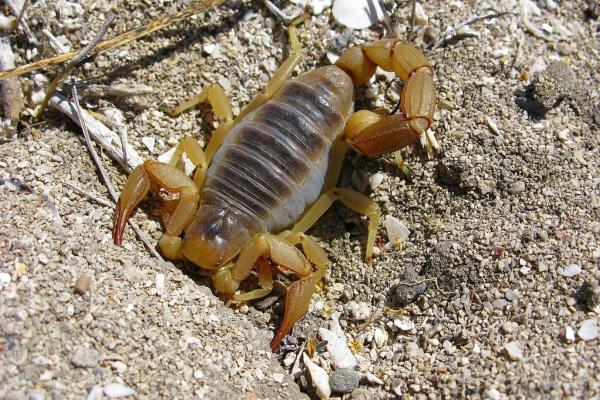
Lizards
Lizards are of the group of animals known as reptiles, none of which have hair on their bodies. Instead of hair, lizards have scales. Although different in terms of morphological structure, scales are also made of keratin, so they are more similar to hair than we might think. Thanks to these scales, many lizards can live in very arid areas since they are able to retain moisture. Although their body is covered in scales and they are used as protection, they also have skin which sheds and is harder in some areas than others.
Lizards can also be very dangerous. Learn why with our list of venomous lizards.

Fish
Fish are animals that do not have vertebrate hairs. Their bodies are also covered in scales, but these are not made of keratin. They are mineralized coverings made from various elements including calcium. Not all fish have scales. They are absent in eels and other fish, although sometimes the scales are simply too small to see well. As with hair, fish scales provide protection and camouflage.
Some species of fish have appendages on their body which appear like hairs. This is the case with catfish, i.e. fish in the order Siluriformes. These have a sensory function which help to identify prey and potential danger.

Crabs
Crabs are a type of crustacean, belonging to the decapod group. Like other arthropods, their body is made up of an exoskeleton, which is also made up of chitin. It is highly mineralized, making it a hard cover or shell. This cover is commonly shed by crabs because it limits growth, so the shell changes as they grows. There are many different types of crabs with a diverse range of shell color and type.

Turtles
The order of the testudines contains the various turtle species that exist. Turtles are hairless animals, but they have a hard carapace in the form of a shell. Some think a turtle's shell is not part of the turtle's body, but this is not true. It is actually part of their skeleton and they can feel pain when it is harmed. Some species lack a very hard shell, as is the case with the leatherback sea turtle (Dermochelys coriacea), a type of sea turtle with a leathery skin.

Birds
It may be unusual to think of them as being similar, but modern birds are closely related to dinosaurs in terms of evolution. In fact, birds are more closely related to dinosaurs than crocodiles. Instead of hair, these animals have feathers, as well as keratinous scales. These scales are mostly found on their legs. Feathers help with flight, but also serve as protection, thermoregulation, camouflage and mating attractors. These epidermal growths are also known to have existed on some species of dinosaur.

Spiders
Another of the true hairless animals are spiders. Like scorpions and ticks, spiders are arachnids. They have an exoskeleton which is not mineralized as in other animals. For this reason, they do not have the same hardness as a scorpion.
Certain types of spider, such as the tarantula, have bodies covered in something known as urticating bristles or urticating hairs. Despite the name, these are not actual hairs. They are the same appendage which is found on certain plants such as stinging nettles. In some spiders, these barbs can be launched and used as a defense mechanism to avoid attackers. Tarantulas also hide in burrows to surprise attack passing prey.
Find out more about morphological and physiological traits of tarantulas and other spiders with our guide to the anatomy of a spider.
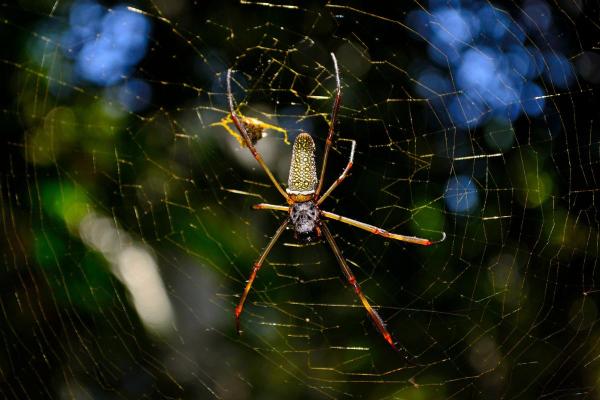
Other animals that do not have hair
In addition to the above, there are also many other animals that lack hair or fur. Among these we have:
- Oysters
- Coral
- Worms
- Jellyfish
- Snakes
- Salamanders
- Sea urchins
- Starfish
- Sea cucumbers
- Slugs
Now we know about the different animals that do not have hair, we can learn more about how some of these animals live. This can be done with our article on the different types of animals with scales.
If you want to read similar articles to Hairless Animals - Examples of Animals Without Hair, we recommend you visit our Facts about the animal kingdom category.
- Animal Diversity Web. (2020). Retrieved from: https://animaldiversity.org/
- Hickman, C., Roberts, L., & Parson A. (2000). Comprehensive principles of zoology. McGraw Hill Interamericana.

